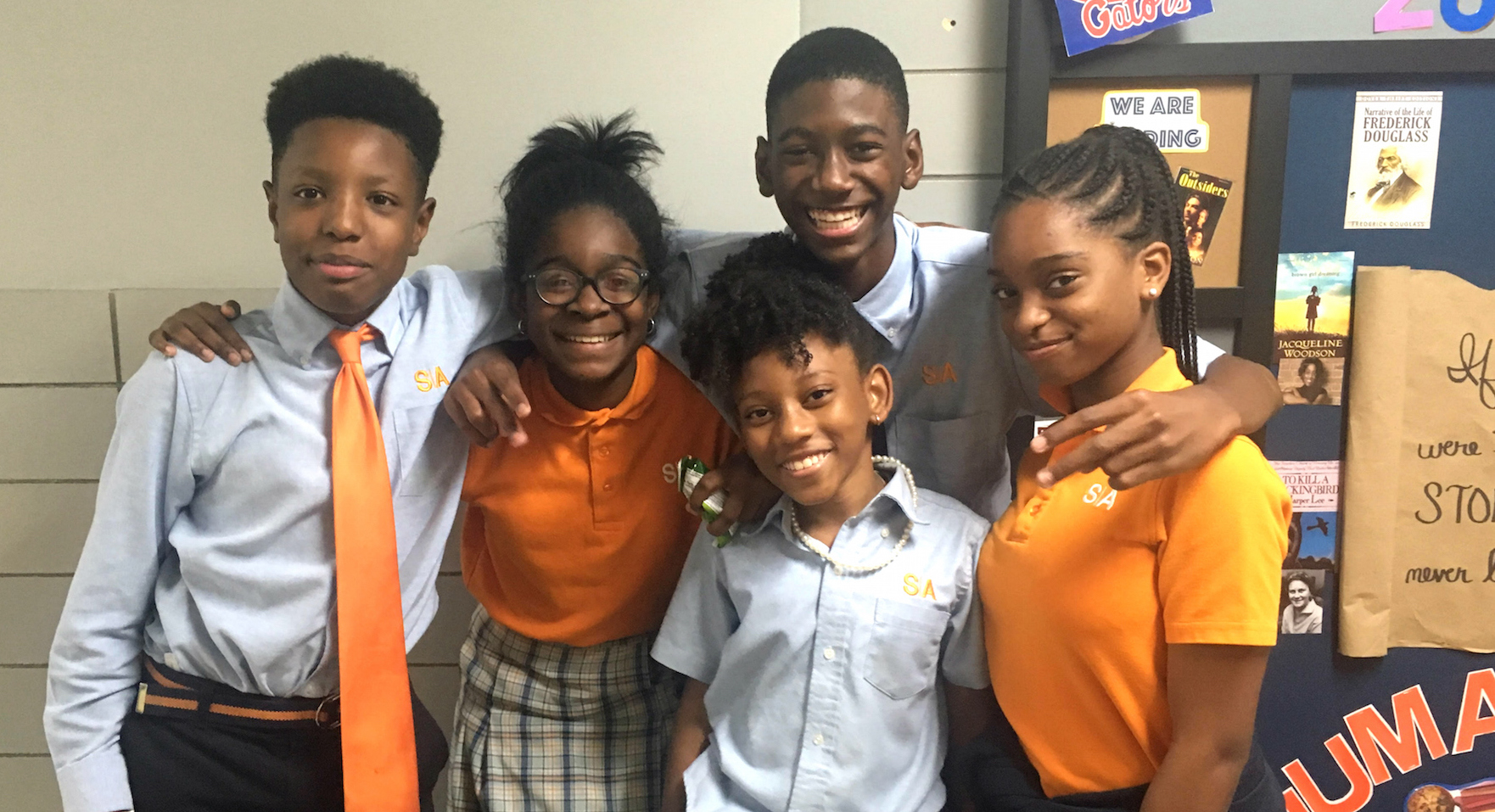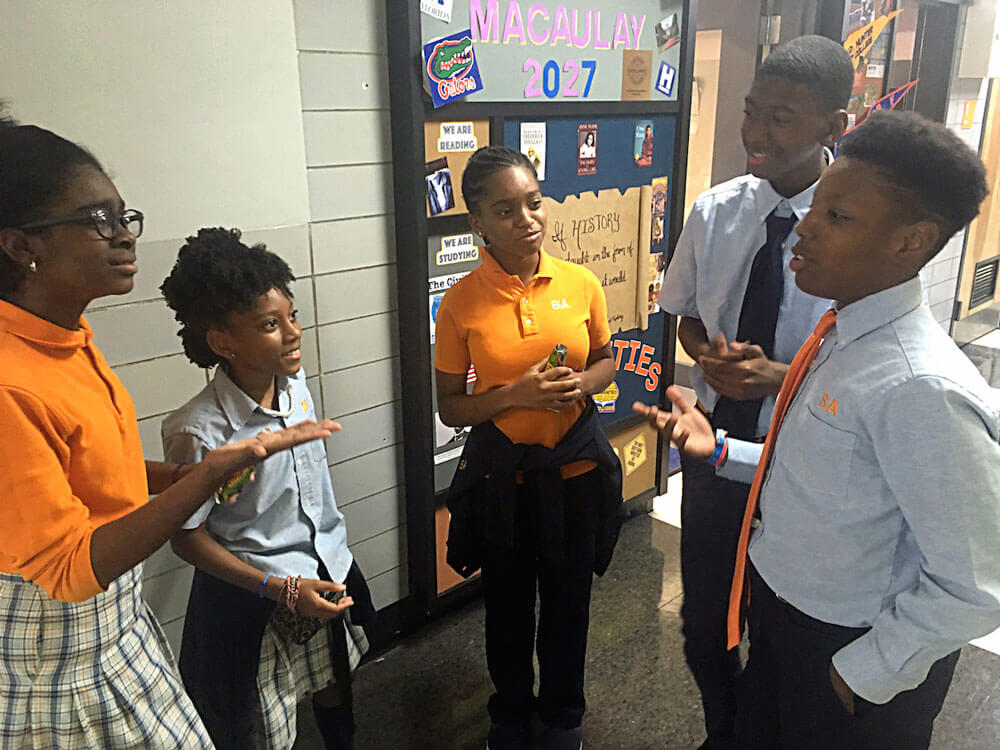
During one of the first Humanities lessons this year, the hands of my 7th grade historians shot into the air in response to my question: should statues honoring Confederate generals be removed from cities and towns across the U.S.?
I’m always inspired by how much our scholars care about the world around them, and I’d been looking forward to this class discussion ever since summer T School, when I saw the topic on the history syllabus for middle school students. Even before the events in Charlottesville, our History team had planned to have scholars read op-eds arguing for and against the removal of Confederate symbols as part of our Civil War unit. One of my favorite parts of working at Success Academy is bringing history to life for my scholars; my co-teacher Kristin Jones and I were excited to have the class analyze the ways our past affects the present with such a stark example.
Current events also presented an opportunity for my scholars to dust off their public speaking skills. It’s so important for scholars to have opportunities to articulate arguments with evidence and reasoning, and to learn to do in a freely flowing discussion — without digressing. At Success Academy, we want them to talk to each other about big ideas in the same way that they’re expected to write: purposefully, concisely, passionately, and respectfully.
My 7th graders lived up to my expectations! What unfolded was a thoughtful, courteous — and lively — roundtable with a range of opinions. Several of our most vocal scholars agreed to carry on their discussion after class and share their points with our readers. I hope they give everyone some inspiration for their own important dialogues about about race, injustice, and current events.
Zach takes the floor: “Here’s the issue: these statues are all about representation. They represent slavery, and they give hate groups an object to grab onto that says: ‘America is about racism!’ It’s not tolerable, and it’s not what America should be about.”
Kerrisa respectfully disagrees: “But everyone has an interpretation of what these statues actually represent. When the statue was originally built, it didn’t just stand for slavery. It was to show the viewpoint of a side of people who fought for their beliefs. To be honest, you can’t just take down a symbol in America just because you think it’s wrong or that it’s racist. Maybe we need more Union statues so that everyone has some representation. But I think we need to leave the Confederate statues standing.”
Zach responds: “I think it’s taking our First Amendment rights too far when these hate groups get to gain strength from the symbol of the statues.”
Zoey speaks up: “Symbols from the past can help us move forward to the future, though. Black people look at these statues and see racism. These statues help everyone see what we’ve been through. If we leave them up and talk about them, it’s going to make a change in our brains — we see them and remember that we don’t want racism to happen anymore. I understand that they also help racist people feel more powerful, but I think it’s important to leave them up.”
Micquel responds: “I really don’t like having the statues stay up, but if we take them down, it will cause more conflict and more violence. I’ve decided that they need to stay up — just let the racists believe what they want and make changes in the rest of the country to fight against racism. Taking the statues down won’t make us more powerful.”
Zach still disagrees: “Leaving the statues up gives hateful people something to hold onto. What do we have to hold onto?”
Micquel: “Our beliefs!”
Zach: “But what physical objects?”
Micquel: “We don’t need items to hold onto for our beliefs.”
Alaya steps in: “Some people really do. Sometimes symbols help us believe in something and keep pushing on. You can look at inspiring things and not feel empty, or left out of society. Since we have all these statues representing the perspective of white racist people, it can be very hurtful for those who are black and for those who aren’t racist.”
Time is up, and Zach concludes: “I think it’s time to send a message that we aren’t going to tolerate racism, and this statue issue has at least given people something to talk about. Even for kids, it’s important to get to talk about these issues and not have this thing so heavy on our shoulders. Me, just keeping this in really angers me, because it is not right. We shouldn’t have to put up with racism in silence.”

From left to right: Alaya, Zoey, Kerrisa, Micquel and Zach discuss whether or not Confederate statues should be removed.










